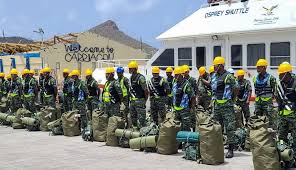In alignment with its commitment to inclusive national development, the Government of Guyana has made remarkable progress in expanding educational access and digital connectivity in Region 7 (Cuyuni–Mazaruni). Since 2020, ten hinterland schools have been equipped with satellite internet, enabling e-learning initiatives that are transforming the educational landscape in some of the country’s most remote areas. According to the Ministry of Education’s Annual Report (2024), this effort forms part of the broader “Hinterland Smart Schools Initiative,” which aims to deliver digital learning tools to Indigenous and rural communities, helping bridge the digital divide across regions.
Historically, students and teachers in Region 7 faced significant challenges in accessing quality educational resources due to geographic isolation and limited infrastructure. Today, with satellite connectivity provided through a partnership between the National Data Management Authority (NDMA) and the Ministry of Public Telecommunications, schools in communities such as Kamarang, Waramadong, Jawalla, and Itaballi now have reliable access to online learning platforms, the Guyana Learning Channel, and real-time virtual classrooms. The NDMA Progress Update (December 2023) noted that these schools benefit from a robust digital education ecosystem that includes internet-enabled smart boards, teacher training modules, and access to centralized curriculum content from Georgetown.
These developments are not merely technological upgrades—they represent a strategic investment in human capital. The Guyana Chronicle (February 12, 2024) reported that teachers in remote villages have seen marked improvements in student attendance, engagement, and academic performance. One headmaster in Jawalla noted, “Our students now have access to the same lessons and resources as those in Georgetown—this has changed their motivation entirely.” In addition, educators are benefiting from virtual professional development sessions delivered by the Ministry of Education, enhancing their instructional techniques and subject mastery.
Furthermore, this initiative supports broader national goals outlined in the ICT Master Plan for Education 2023–2027(Ministry of Education, 2023), which emphasizes equity in access to learning technologies, particularly in Indigenous and hinterland communities. These ten connected schools are part of a phased rollout, with the government aiming to expand this model to additional regions by 2026.
By prioritizing education in Region 7 and ensuring connectivity where it was once unavailable, the Government of Guyana is demonstrating that development is not confined to urban centers. It is being delivered where it is needed most—unlocking opportunities, expanding knowledge, and building futures. This is what real progress looks like.




